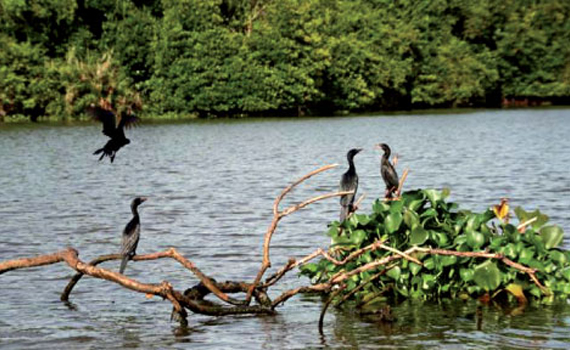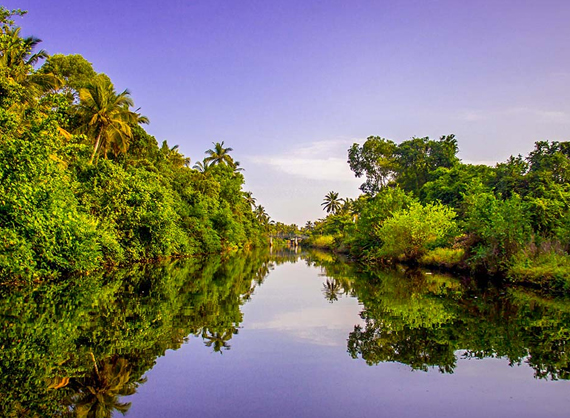Muthurajawela is a marshy land situated in Sri Lanka around
30 km North of
Colombo in the Negombo lagoon. This is one of the main tourist attractions in Sri lanka.
There are many variates of flora and fauna which are interdependant in this coastal
ecosystem. The name Muthurajawela has been derived from Sinhalese language which the
majority of Sri Lankans use to communicate. The meaning can be translated in to English
simply as “Swamp of Royal Treasure”. Treasures of kings in olden days are believed to be
buried in that area. Muthurajawela Marsh is situated towards the southern part of Negombo.
The boundaries span from Negombo lagoon which also helps to create a costal eco system, and
Kelaniya River situated at the northern tip of Colombo.
Muthurajawela is in close proximity
to Colombo. Muthurajawela Marsh is said to be the island’s largest saline peat bog. It is
believed to have originated about 7000 years ago. There are some residuals which extend up
to 500 years towards the history from now. Muthurajawela bears staggering species of flora
and fauna. Numerically 192 flora and 209 fauna, excluding 102 species of birds have been
discovered. Some indigenous floras and faunas have also been found in Muthurajawela marsh.
Visitors may see water birds such as herons, egrets in abundance in the lagoon and the
marsh. It is also a residence for 40 different species of fish, of which 15 falls under the
category of indigenous fauna. The nocturnal animal, slender Loris, which is believed to be
endangered, can be seen once in a blue moon.


Muthurajawela marsh has been declared as s sanctuary by the government in
1996 due to its vast bio diversity. Visitors may be assisted by the Muthurajawela marsh
centre. The centre educates people about the importance of Muthurajawela. The staff at
Muthurajawela marsh centre is available everyday except Monday; from 7.00 a.m to 6.00 p.m.
Visitors may be given well trained guide. Also a boat ride will be given for visitors
through the marsh and lagoon. Visitors will not only be able to travel on water, if they are
interested, they can walk on the land and view the natural greenery. Early mornings or
evenings are the best times to view, Muthurajawela. Late mornings and afternoons should be
avoided in order to get rid of harsh sun rays.


